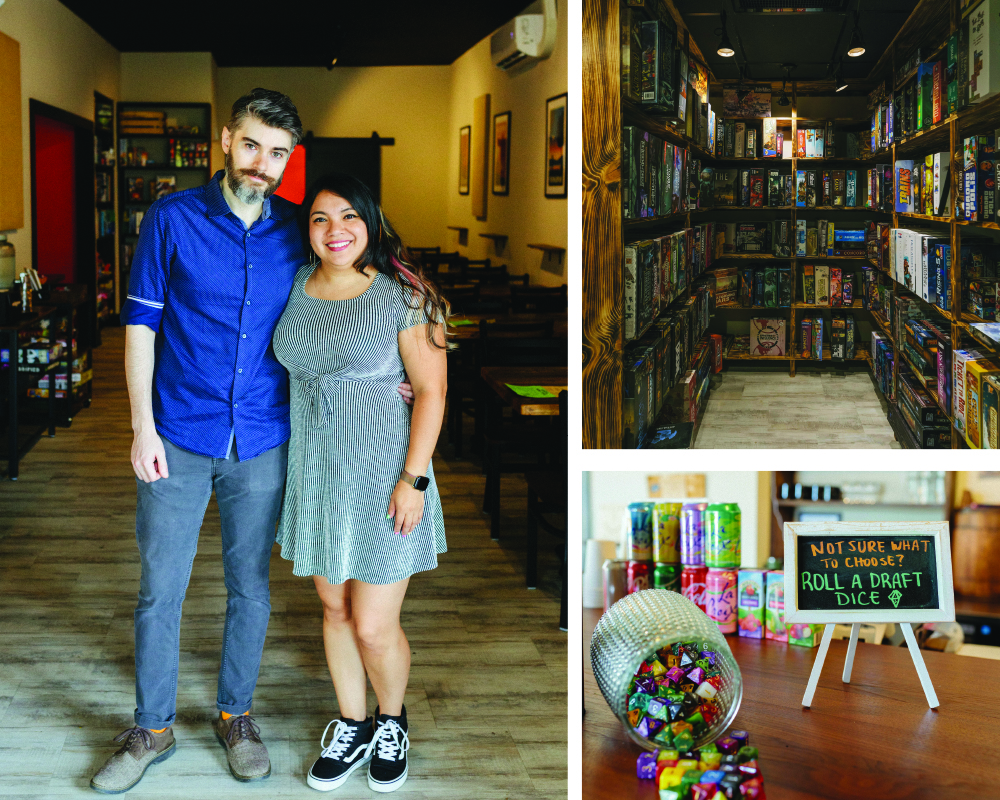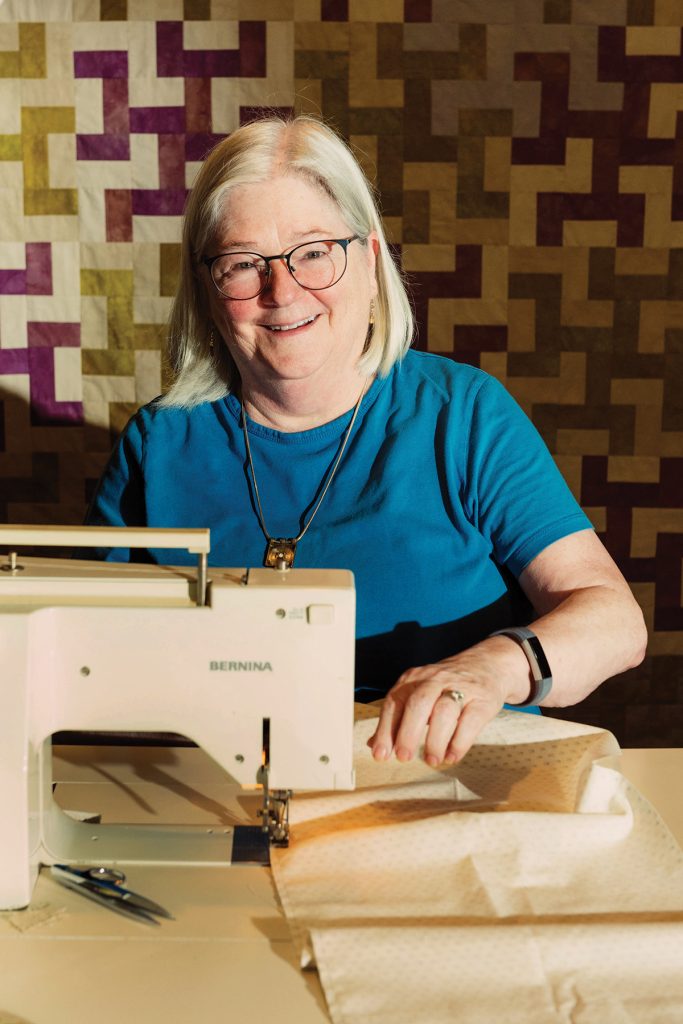
Kathleen Weir-West has worked in the top tier of textile art for 30 years. Photo by Megan Maeascalco.
For Kathleen Weir-West, tapestry happens even off the loom. On a sun-bleached day in late fall, she gazes into her backyard and mentally weaves the foliage into a fluid pattern she sees as clearly as if it is right in front of her.
The designer has spent a lifetime absorbed in yarns and fabric, honing her handwoven craft into a respected business. Weir-West’s eclectic jackets and skirts have been shown at juried art and craft shows for 30 years, and now the Chicago native has settled seamlessly into the Western North Carolina craft scene.
She’s quick to ascribe her creativity to her mother, who made her daughter’s clothing and taught her to sew. Weir-West remembers how she lost herself among the colors and textures in the fabric store.
“I thought, ‘look at the possibilities,’” she says.
She finished with a degree in psychology at Loyola University Chicago but discovered an interest in Pre-Columbian art. At Chicago’s Field Museum of Natural History, she was introduced to Native Pacific Indian art and felt a desire to see the world, prompting trips to India, Nepal, and North Africa — but Weir-West credits the experiences abroad as only subtle influences on her work. Instead, she defers to art, costume design, textiles, and jewelry as her primary inspiration. She keeps folders of inspirational images from magazines to reference when her “brain goes blank.”
One of her favorite pieces was inspired by sofa upholstery. “It was this wonderful blue mixed with a rusty red,” she says, closing her eyes as she describes how she circled the piece of furniture and formulated ideas for a jacket.
A New Direction
Weir-West married in her early thirties (her husband passed away in 2005) and began graduate classes in counseling, where a professor helped her realize that art was her calling. Switching schools soon after, she immersed herself in weaving, dying, and embellishment at Elliot Lake Centre for the Arts in Ontario, Canada, over the course of three summers. “You’d want to live like that,” she says. “It was an ideal place to learn.”
She describes her teachers — Martha Wickam, Guerite Steinbacher, and Sylvia Hayden — fondly. Each played a unique role in her growth as a weaver, and she says the feeling was mutual.

Intricately woven patterns and hues are a hallmark of Weir-West’s couture jackets. Photo by Megan Marascalco.
“My weaving teachers liked me because I was serious,” she says. “And funny.”
She began making dresses, but soon switched to jackets after a request from her sister. Weir-West found that jackets were easier to sell and fit and she soon garnered a loyal base of appreciative clients.
At the time, handmade goods and the “maker movement” were on the rise. “The more the public was educated to the processes [behind the craft], the more they wanted to see,” she remarks. “There have always been people who valued handmade, handcrafted, artisan works. There have always been people who can afford to promote the arts and crafts, and then there are the people who make a sacrifice in order to own pieces they consider precious and meaningful.”
One jacket with an intricate, prismatic pattern along the sleeves and collar sold for $985. “That one paid a lot of bills,” she says.
Order in the Chaos
Her two grand, pioneer-style looms are almost hidden under the fabric and yarn strewn around them. Weir-West weaves yardage with five to seven yarns and uses two yarns per bobbin and shuttle.
She’s concerned that her studio is a mess. And it is — but it’s a beautiful mess. Spindles of yarn and cuts of fabric (rayon, cotton, silk, bamboo) pop and spill from every corner, not a surface left uncovered. Setting up the loom is complicated, and she treats it like a religious ritual.

The artist’s pioneer-style looms require an almost ritualistic preparation. Photo by Megan Marascalco.
Colors, for her, have depth and intention — even black offers more than one shade. She won’t name a favorite hue.
“It’s not so much a favorite color as the shade and the use or place of [the hue]. Though red is very energizing just about everywhere. And I do love throwing a bit of purple in my weaving.
“I’m going to die with most of these yarns,” she says.
Weir-West sells her jackets, skirts, and pillows through galleries such as Bellagio in Asheville, and she’s currently working with Suzanne Ball, founder of The Studios at Flat Rock. She is also a member of the Southern Highland Craft Guild.
At press time, Weir-West was preparing to leave for the Piedmont Craft Guild in Winston-Salem; in spring, she plans to travel to Nashville for a show, though more for fun than for work.
“I’ve cut out most of the shows I used to do, since I really love being down here in WNC rather than driving around the country standing around under my tent outside, or on concrete in some indoor arena.”
She calls the current DIY movement, including vast maker-merchandising sites ETSY and eBay, “energizing” — however, her own clothing is too hand-tailored to sell online.
But Weir-West keeps her work fresh with new patterns (she has worked with seamstress Linda Handel of Zirconia for many years), and she’s always thinking of ways to reinvent herself on the loom. Recently, she revisited the tricky “Rya knot,” seen in Oriental carpets.
Like the child in the fabric store, she’s still dazzled by the possibilities.
“It’s something rather blissful once the loom is set up. Some weavers enjoy the technical aspect, bless their hearts. For me, it’s the colors, the textures of the yarns,” she says. “It’s the idea that you can take this and make it your own.”
To view Kathleen Weir-West’s work, visit www.kweirwest.com, or in person at The Studios at Flat Rock (2702-A Greenville Hwy.) 828-698-7000.



